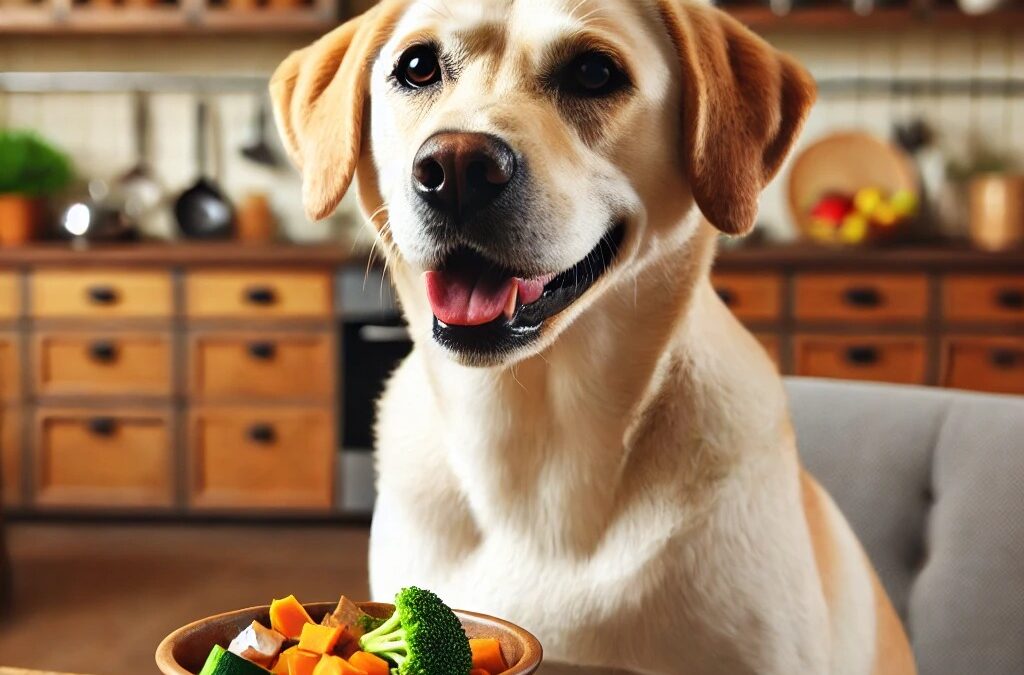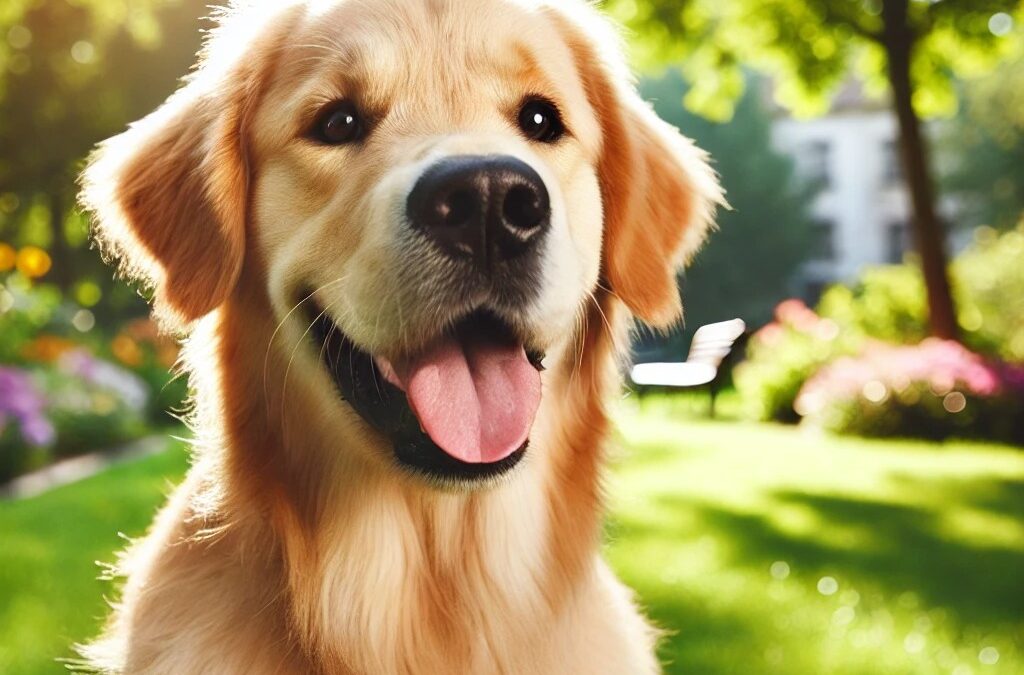
by TCMVET | Jul 18, 2024 | Pet Story
When my beloved dog, Snapper, was diagnosed with cancer, my world turned upside down. The prognosis was grim, and I was overwhelmed with fear and uncertainty. However, I was determined to fight for Snapper’s life and explore every possible option to save him. This is the story of our journey from diagnosis to triumph, and how the innovative product, Baituxiao, played a crucial role in his recovery.
The Devastating Diagnosis
It all started when I noticed a lump on Snapper’s side. Concerned, I took him to the vet, hoping it was nothing serious. The diagnosis was devastating: Snapper had lymphoma, a common yet aggressive form of cancer in dogs. The vet explained the conventional treatment options, including chemotherapy, which had varying degrees of success and significant side effects. I knew I had to find a solution that would not only treat the cancer but also support Snapper’s overall well-being.
Exploring Treatment Options
Determined to give Snapper the best chance, I began researching alternative and complementary therapies. During my search, I came across Baituxiao, a product by TCMVET designed to support the immune system and overall health of dogs with cancer. Intrigued by its potential benefits, I decided to incorporate Baituxiao into Snapper’s treatment plan alongside the recommended chemotherapy.
The Role of Baituxiao in Snapper’s Recovery
Baituxiao is a unique blend of traditional Chinese medicinal herbs known for their immune-boosting and anti-cancer properties. It is formulated to help dogs combat the side effects of conventional treatments and improve their quality of life. Here’s how Baituxiao made a difference in Snapper’s journey:
- Immune System Support Baituxiao helped strengthen Snapper’s immune system, making him more resilient to infections and better able to cope with the rigors of chemotherapy. This support was crucial in maintaining his overall health during treatment.
- Reduced Side Effects One of my biggest concerns with chemotherapy was the potential side effects, such as nausea, fatigue, and loss of appetite. Baituxiao helped mitigate these side effects, allowing Snapper to maintain his energy levels and appetite throughout the treatment process.
- Improved Quality of Life Despite the cancer diagnosis, I wanted Snapper to enjoy a good quality of life. Baituxiao contributed to his overall well-being, making him more active, playful, and happy even during the most challenging times.
A Holistic Approach to Treatment
In addition to using Baituxiao, I adopted a holistic approach to Snapper’s treatment. This included:
- Nutritious Diet: I prepared homemade meals rich in high-quality proteins, healthy fats, and antioxidants to support Snapper’s immune system and overall health.
- Regular Exercise: Keeping Snapper active with regular walks and playtime helped boost his mood and physical strength.
- Veterinary Care: Regular check-ups and consultations with the vet ensured that we were on the right track and allowed us to make any necessary adjustments to his treatment plan.
The Triumph
After months of dedicated care, the combination of conventional treatment, holistic support, and the benefits of Baituxiao led to a remarkable improvement in Snapper’s condition. His cancer went into remission, and he regained his vitality and zest for life. The journey was challenging, but the joy of seeing Snapper healthy and happy again made it all worthwhile.
Snapper’s story is a testament to the power of hope, determination, and the right combination of treatments. Baituxiao proved to be an invaluable ally in our fight against cancer, helping to support Snapper’s immune system and improve his quality of life. For pet owners facing a similar battle, I encourage you to explore all available options, including innovative products like Baituxiao, and to never give up hope. From diagnosis to triumph, there is always a path to recovery, and every step forward is a victory worth celebrating.

by TCMVET | Jul 18, 2024 | Food & Health
When faced with the daunting diagnosis of cancer in our beloved dogs, we often seek every possible avenue to support their health and well-being. Among the natural remedies gaining attention is rosehip oil, a powerful supplement that can provide significant benefits for dogs battling cancer. This article explores the potential of rosehip oil as a natural ally in the fight against canine cancer, offering insights into its properties, benefits, and how to incorporate it into your dog’s care routine.
What is Rosehip Oil?
Rosehip oil is derived from the seeds of the wild rose bush (Rosa canina). It is renowned for its rich content of essential fatty acids, vitamins, and antioxidants, making it a potent natural remedy for various health issues. Its anti-inflammatory and immune-boosting properties have made it a popular choice in holistic pet care.
The Benefits of Rosehip Oil for Dogs with Cancer
- Anti-Inflammatory Properties Inflammation is a common issue in dogs with cancer, contributing to pain and discomfort. Rosehip oil’s anti-inflammatory properties can help reduce inflammation, providing relief and improving your dog’s quality of life.
- Rich in Antioxidants Rosehip oil is packed with antioxidants, including vitamins C and E, which help combat oxidative stress. Oxidative stress can accelerate cancer progression, so incorporating antioxidants into your dog’s diet can support their immune system and overall health.
- Immune System Support A robust immune system is crucial for dogs battling cancer. The nutrients in rosehip oil, such as vitamin C, can enhance immune function, helping your dog fight off infections and potentially slowing cancer progression.
- Skin and Coat Health Cancer treatments can often lead to skin issues and a dull coat. The essential fatty acids in rosehip oil promote healthy skin and a shiny coat, helping your dog look and feel better during their treatment.
- Digestive Health Rosehip oil can also support digestive health, which is essential for dogs undergoing cancer treatment. It can help soothe the digestive tract, reduce inflammation, and promote nutrient absorption.
How to Incorporate Rosehip Oil into Your Dog’s Diet
Introducing rosehip oil into your dog’s diet can be simple and effective. Here are a few methods to consider:
- Add to Food The easiest way to give your dog rosehip oil is by adding it to their food. Start with a small amount to ensure your dog tolerates it well and gradually increase to the recommended dosage based on your dog’s size and weight.
- Topical Application For skin and coat benefits, you can apply rosehip oil directly to your dog’s skin. This can be particularly helpful for dogs experiencing skin issues as a side effect of cancer treatments.
- Consult Your Veterinarian Always consult your veterinarian before introducing any new supplement into your dog’s diet, especially when dealing with a condition as serious as cancer. Your vet can provide personalized dosage recommendations and ensure that rosehip oil complements your dog’s overall treatment plan.
Combining Rosehip Oil with Other Treatments
While rosehip oil offers numerous benefits, it is essential to use it as part of a comprehensive cancer treatment plan. Combining rosehip oil with traditional treatments, such as chemotherapy and radiation, as well as other supportive therapies, can provide the best possible outcomes for your dog.
Rosehip oil stands out as a natural ally in the fight against canine cancer, offering anti-inflammatory, antioxidant, and immune-boosting benefits. By incorporating this powerful supplement into your dog’s care routine, you can support their health and enhance their quality of life during this challenging time. Remember to consult with your veterinarian to ensure the best approach for your dog’s unique needs, and embrace the holistic potential of rosehip oil in your dog’s battle against cancer.

by TCMVET | Jul 18, 2024 | Food & Health
As pet owners, the diagnosis of cancer in our beloved dogs can be heart-wrenching. While veterinary treatments are crucial, nutrition plays a significant role in supporting their health and well-being during this challenging time. Creating homemade meals tailored to the needs of dogs battling cancer can provide essential nutrients, improve their quality of life, and complement medical treatments. Here’s a guide to crafting the best homemade meals for dogs fighting cancer.
Understanding the Nutritional Needs of Dogs with Cancer
Cancer can significantly alter a dog’s metabolism, leading to weight loss, muscle wasting, and decreased energy levels. It’s essential to understand the specific nutritional requirements for dogs with cancer:
- High-Quality Protein: Protein helps maintain muscle mass and supports the immune system. Choose easily digestible, high-quality protein sources such as chicken, turkey, fish, and lean beef.
- Healthy Fats: Fats are a vital energy source for dogs with cancer. Omega-3 fatty acids, found in fish oil, flaxseed oil, and chia seeds, have anti-inflammatory properties and can help slow cancer progression.
- Low Carbohydrates: Cancer cells thrive on glucose, so it’s beneficial to limit carbohydrate intake. Opt for low-glycemic vegetables like broccoli, spinach, and cauliflower.
- Antioxidants: Antioxidants help combat oxidative stress and support the immune system. Incorporate foods rich in vitamins A, C, and E, such as carrots, blueberries, and sweet potatoes.
- Hydration: Ensure your dog stays well-hydrated, as cancer and its treatments can lead to dehydration. Add bone broth or water-rich vegetables like cucumbers to their diet.
Recipe Ideas for Homemade Dog Meals
Here are some nutritious and delicious recipes to consider when preparing homemade meals for your dog with cancer:
1. Chicken and Veggie Delight
- Ingredients:
- 1 cup cooked chicken breast (shredded)
- 1/2 cup steamed broccoli (chopped)
- 1/2 cup steamed carrots (chopped)
- 1/4 cup quinoa (cooked)
- 1 tablespoon fish oil
- Instructions:
- Combine all ingredients in a bowl.
- Mix well and serve at room temperature.
- Store leftovers in the refrigerator for up to three days.
2. Beef and Sweet Potato Stew
- Ingredients:
- 1 pound lean ground beef
- 1 cup sweet potatoes (diced)
- 1/2 cup green beans (chopped)
- 1/4 cup blueberries
- 1 tablespoon flaxseed oil
- Instructions:
- Cook the ground beef in a skillet until fully browned.
- In a pot, combine the cooked beef, sweet potatoes, green beans, and blueberries.
- Add enough water to cover the ingredients and simmer until the vegetables are tender.
- Stir in the flaxseed oil and let the stew cool before serving.
- Store leftovers in the refrigerator for up to three days.
3. Fish and Spinach Medley
- Ingredients:
- 1 cup cooked salmon (flaked)
- 1/2 cup spinach (steamed and chopped)
- 1/2 cup cauliflower (steamed and chopped)
- 1/4 cup brown rice (cooked)
- 1 tablespoon chia seeds
- Instructions:
- Combine all ingredients in a bowl.
- Mix well and serve at room temperature.
- Store leftovers in the refrigerator for up to three days.
Supplementing with TCMVET’s Baituxiao
In addition to these nutritious meals, consider supplementing your dog’s diet with TCMVET’s Baituxiao. This supplement is formulated to support the immune system and overall health, providing an extra layer of defense against cancer.
Consulting with Your Veterinarian
Before making any significant changes to your dog’s diet, consult with your veterinarian. They can provide personalized recommendations based on your dog’s specific needs and medical condition.
Crafting homemade meals for dogs battling cancer is a labor of love that can have a profound impact on their health and quality of life. By understanding their nutritional needs and incorporating high-quality ingredients, you can provide your furry friend with the best possible support during their fight against cancer. Remember, a well-balanced diet, combined with veterinary care and supplements like TCMVET’s Baituxiao, can make a significant difference in their journey to recovery.

by TCMVET | Jul 18, 2024 | Dog Cancer & Tumors
Spleen cancer in dogs, particularly hemangiosarcoma, is a devastating diagnosis for pet owners. This aggressive cancer often presents with little warning, making early detection and treatment challenging. However, recent advancements in veterinary medicine have brought new hope, significantly improving survival rates for dogs battling this disease.
Understanding Spleen Cancer in Dogs
Spleen cancer in dogs primarily refers to hemangiosarcoma, a malignant tumor arising from the blood vessels in the spleen. This cancer is notorious for its rapid spread and often goes undetected until it reaches an advanced stage. Common symptoms include sudden weakness, pale gums, rapid heart rate, and abdominal swelling. Unfortunately, these symptoms can be easily mistaken for other less severe conditions, delaying diagnosis and treatment.
Traditional Treatment Approaches
The standard treatment for spleen cancer in dogs has typically involved a combination of surgery and chemotherapy. Splenectomy, the surgical removal of the spleen, is often the first line of defense. While this can temporarily halt the cancer’s progression, the disease frequently recurs. Chemotherapy, used in conjunction with surgery, aims to extend survival time and improve the quality of life. However, the prognosis has historically been grim, with survival times often limited to months rather than years.
Innovative Treatments Bringing New Hope
Recent advancements in veterinary oncology are shifting the landscape for dogs with spleen cancer. These innovative treatments are offering new hope and significantly boosting survival rates.
- Targeted Therapies Targeted therapies have revolutionized cancer treatment in both humans and animals. By specifically targeting cancer cells while sparing healthy tissue, these therapies can reduce side effects and improve outcomes. Drugs like toceranib phosphate (Palladia) are showing promise in treating hemangiosarcoma by inhibiting the growth of blood vessels that feed tumors.
- Immunotherapy Immunotherapy is another groundbreaking approach gaining traction in veterinary oncology. This treatment harnesses the dog’s immune system to recognize and attack cancer cells. Therapies such as monoclonal antibodies and cancer vaccines are being explored, with early results indicating improved survival rates and a better quality of life for affected dogs.
- Integrative Medicine Integrative medicine combines conventional treatments with alternative therapies to provide a holistic approach to cancer care. This can include dietary changes, supplements, acupuncture, and herbal remedies. One promising supplement is TCMVET’s product ‘Baituxiao’, which is formulated to support the immune system and improve overall health. Integrating such supplements can enhance the effectiveness of traditional treatments and help manage side effects.
The Role of Early Detection
While innovative treatments are improving survival rates, early detection remains crucial. Regular veterinary check-ups and being vigilant about changes in your dog’s health can lead to earlier diagnosis and more effective treatment. Blood tests, ultrasounds, and other diagnostic tools are essential in identifying spleen cancer before it reaches an advanced stage.
The battle against spleen cancer in dogs is far from over, but these innovative treatments are paving the way for a brighter future. Pet owners facing this diagnosis now have more options and a renewed sense of hope. By staying informed about the latest advancements and working closely with veterinary professionals, it is possible to improve outcomes and provide the best possible care for dogs with spleen cancer.

by TCMVET | Jul 17, 2024 | pet Chinese herbal medicine
Cancer in dogs is a heartbreaking diagnosis, but recent advancements in veterinary medicine are offering new hope and innovative treatments for our beloved pets. Among these breakthroughs is the introduction of TCMVET’s product, Baituxiao, which is making significant strides in the field of canine cancer care. In this article, we explore the latest advancements in treating canine cancer, with a special focus on how Baituxiao is revolutionizing treatment and bringing new hope to pet owners.
Understanding Canine Cancer
Canine cancer can manifest in various forms, including lymphoma, mast cell tumors, osteosarcoma, and melanoma. Symptoms vary depending on the type and location of the tumor but can include lumps or bumps, unexplained weight loss, lethargy, and changes in appetite or behavior. Early detection and diagnosis are crucial for effective treatment and improved prognosis.
Breakthroughs in Canine Cancer Treatment
1. Immunotherapy
Immunotherapy is one of the most promising advancements in veterinary oncology. This treatment leverages the dog’s immune system to target and destroy cancer cells. Vaccines, monoclonal antibodies, and checkpoint inhibitors are some of the tools used in immunotherapy. For instance, the development of the canine melanoma vaccine has shown significant success in treating this aggressive cancer, prolonging the lives of many dogs.
2. Targeted Therapy
Targeted therapy specifically attacks cancer cells based on their genetic makeup, minimizing side effects and improving the quality of life for pets. Drugs like Palladia (toceranib phosphate) have been approved for the treatment of mast cell tumors in dogs. These therapies are designed to interfere with the specific molecules that drive the growth and spread of cancer cells.
3. Advanced Imaging Techniques
Advanced imaging techniques, such as MRI, CT scans, and PET scans, allow veterinarians to accurately locate tumors and assess their spread. These technologies enable the creation of personalized treatment plans tailored to each dog’s unique condition, leading to better outcomes.
4. Precision Surgery
Surgical intervention remains a cornerstone of cancer treatment in dogs. Advances in surgical techniques, including minimally invasive procedures and robotic-assisted surgery, have enhanced the precision and effectiveness of tumor removal. These methods reduce recovery times and lower the risk of complications, allowing pets to return to their normal activities more quickly.
5. Integrative Therapies and Baituxiao
Integrative therapies are gaining traction in the treatment of canine cancer, and Baituxiao is at the forefront of these advancements. Baituxiao, a product from TCMVET, is a natural remedy that supports traditional treatments. It has shown promise in reducing tumor size and improving overall health in dogs diagnosed with cancer. Combining herbal medicine, acupuncture, and dietary modifications, Baituxiao offers a holistic approach that complements conventional treatments.
The Role of Clinical Trials
Clinical trials play a vital role in the development of new cancer treatments for dogs. By participating in these trials, pet owners can access cutting-edge therapies that are not yet widely available. Clinical trials also contribute to the advancement of veterinary medicine, helping to discover new and more effective treatments for future generations of pets.
The Importance of Early Detection
Early detection is key to successful cancer treatment. Regular veterinary check-ups, routine blood tests, and awareness of common cancer symptoms can lead to earlier diagnosis and intervention. Pet owners should also be proactive in performing monthly at-home checks for lumps, bumps, and other abnormalities.
Supporting Your Pet Through Treatment
A cancer diagnosis can be overwhelming, but there are many ways to support your pet through treatment. Maintaining a positive and calm environment, providing a balanced diet, and ensuring regular exercise can help your dog stay strong and resilient. Additionally, working closely with your veterinarian to manage side effects and monitor progress is essential for your pet’s well-being.
The landscape of canine cancer treatment is rapidly evolving, bringing new hope and improved outcomes for dogs diagnosed with this challenging disease. With advancements in immunotherapy, targeted therapy, advanced imaging, precision surgery, and integrative therapies like Baituxiao, pet owners have more options than ever to help their furry friends fight cancer. Early detection, participation in clinical trials, and comprehensive support during treatment are crucial components of a successful cancer care plan. By staying informed and proactive, you can give your pet the best chance at a healthy and happy life.





